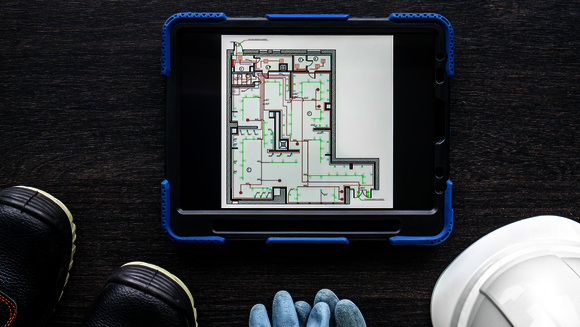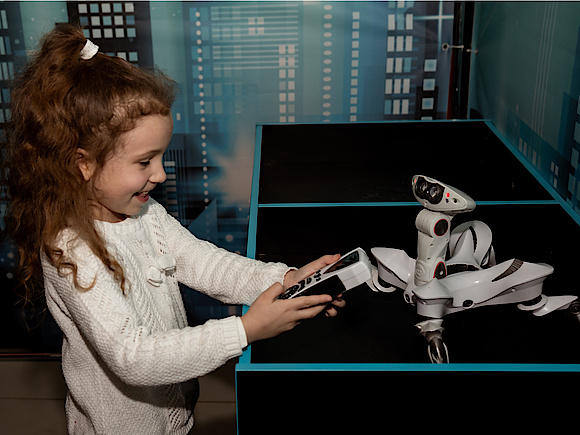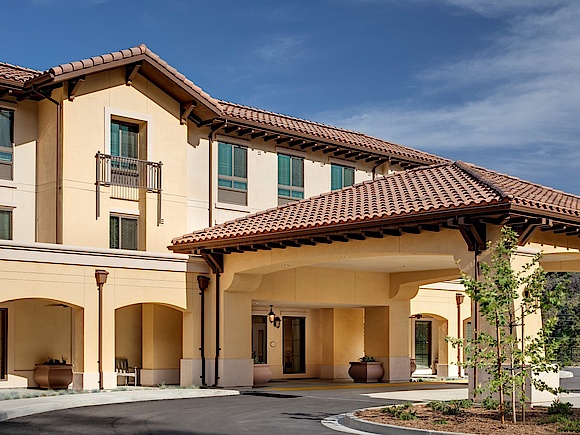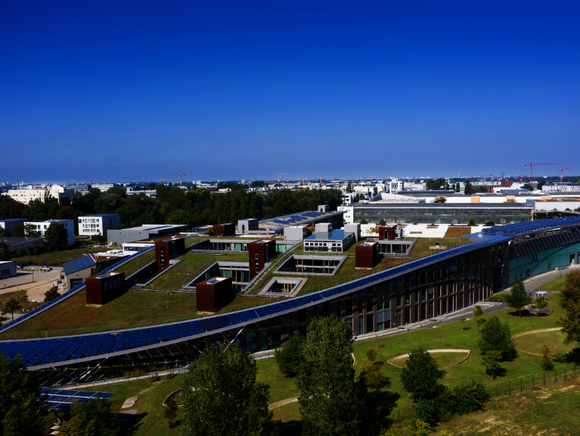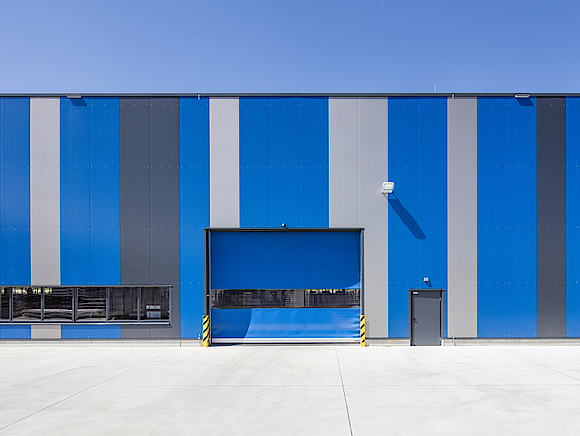
Life Sciences Real Estate - Assetklasse mit Potential
Autor
Dr. Jan Linsin
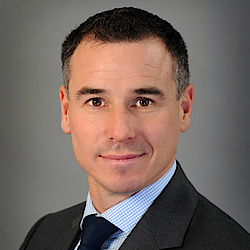
Blogbeitrag
Mehr denn je spricht ganz Deutschland über das Impfen – die Produktionsbedingungen und Lieferketten der Life-Sciences-Branche rücken in die Öffentlichkeit. Dabei profitieren nicht nur die Unternehmen, sondern die gesamte Gesellschaft von den hochfunktionalen Fertigungs- und Lagerstätten, die in den vergangenen Jahren entwickelt wurden. Man denke nur an die rasant wachsenden Bio-Tech-Cluster im Westen Münchens, im Berliner Stadtteil Buch oder in Mainz, wo BioNTech in den nächsten fünf bis acht Jahren die Zahl der Beschäftigten von derzeit rund 1800 Mitarbeiter auf bis zu 4000 ausweiten möchte und hierfür über eine Milliarden Euro in den Standort, der unter anderem einen Campus für die Wissenschaft erhalten soll.
Wenn man jedoch bedenkt, dass Life-Science nicht erst seit Corona ein stark aufstrebender Wirtschaftszweig ist, drängt sich aus Immobiliensicht eine Frage auf: Warum sind Laboratorien beziehungsweise gemischt genutzte Forschungs- und Produktionsareale inklusiver der Flex und Collaborative Lab Spaces hierzulande (noch) nicht längst eine eigenständige Assetklasse für Investoren? In den USA ist das bereits seit gut zwei Jahrzehnten der Fall, inzwischen hat sich im Nordosten der Nation ein regelrechter Supercluster gebildet. Für erstklassiges Produkt in diesen nachgefragten Standorten sind Renditen (Cap Rates) von vier bis 4,5 Prozent realistisch.
Daneben wurden dort in den letzten zwölf Monaten gleich drei milliardenschwere Übernahmen von Life Science-Immobilien durch von auf diese Assetklasse spezialisierte Immobilienfonds erworben. Entsprechend rege ist die Aktivität auf den Vermietungsmärkten. In Europa ist das Vereinigte Königreich einer der großen Märkte, allem voran mit dem Golden Triangle und dessen Center of Excellence Oxford, Cambridge and London's St Pancras. Jüngst feierte Life Science REIT als erster seiner Art sein erfolgreiches Börsendebüt mit einem Bruttoerlös von 350 Million Pfund, um in Life-Science-Immobilien in UK zu investieren. Aber auch in Irland, der weltweit drittgrößten Pharmaexportnation, beginnt sich diese hochspezialisierte Nische zu entwickeln.
Hierzulande ist das jedoch nicht der Fall, da sich sehr viele Unternehmen für eine Eigennutzung entscheiden. Die Gründe dafür sind vor allem Datenschutzfragen und die Befürchtung, dass unbefugte Dritte die Areale betreten könnten. Diese Bedenken müssen durchaus ernst genommen werden, schließlich geht es um hochsensible Informationen, die zukunftsentscheidend für das gesamte Unternehmen sind.
Die Gründe leiten sich also nicht primär aus einer immobilienwirtschaftlichen Logik ab. Im Gegenteil: Für Investoren ergäbe sich zusätzliches Produkt auf den Märkten, zumal für die Unternehmen aus dem Life Science-Bereich die Standorte und die hochspezialisierten Immobilien – unter anderem mit zertifizierten Reinräumen – eine strategische Bedeutung haben. Dank der lang laufenden Mietverträge mit forschungs- und bonitätsstarken Nutzern ergeben sich zudem viele Sicherheitsmerkmale von Core-Investments. Zudem handelt es sich um eine sinnvolle Ergänzung zum Healthcare-Segment, weshalb vor allem ESG- bewusste Investoren die soziale Komponente in ihrem Portfolio weiter stärken könnten.
Mietern kommt hingegen zugute, dass die Verantwortung für die sehr komplexen Wartungsarbeiten und das Facility-Management in die Hände eines entsprechend spezialisierten Vermieters gelegt werden kann.
Wie groß genau die Marktpotenziale hierzulande ausfallen, ist aktuell noch nicht komplett absehbar. Dennoch gibt es keinen Grund, warum Life-Science als Assetklasse nicht eine ähnliche Entwicklung nehmen könnte wie der Pflege- und Gesundheitsimmobilienmarkt. Auch dieser hat sich von einer Investmentnische binnen der letzten Dekade zu einem etablierten Anlageprodukt für institutionelle Investoren entwickelt.
english version
Life Sciences Real Estate - an asset class with potential
More than ever, the whole of Germany is talking about vaccination - the production conditions and supply chains of the life sciences industry are moving into the public eye. It is not just the companies that benefit from the highly functional manufacturing and storage facilities that have been developed in recent years, but society as a whole. Just think of the rapidly growing biotech clusters in the west of Munich, in Berlin's Buch district or in Mainz, where BioNTech plans to expand its workforce from the current 1800 to as many as 4000 in the next five to eight years, investing over a billion euros in the site, which will include a campus for science.
However, if one considers that life science has not only been an up-and-coming industry since Corona, but a question also arises from a real estate perspective: Why have laboratories or mixed-use research and production areas, including flex and collaborative lab spaces, not (yet) become an independent asset class for investors in this country? In the U.S., this has already been the case for a good two decades, and a veritable supercluster has since formed in the northeast of the nation. Cap rates of four to 4.5 percent are realistic for prime product in these sought-after locations.
In addition, three billion-dollar acquisitions of life science properties were made there in the last twelve months by real estate funds specializing in this asset class. Activity on the rental markets is correspondingly brisk. In Europe, the United Kingdom is one of the major markets, especially with the Golden Triangle and its centers of excellence Oxford, Cambridge and London's St Pancras. Recently, Life Science REIT made its successful stock market debut as the first of its kind with gross proceeds of £350 million to invest in life science real estate in the UK. But this highly specialized niche is also beginning to develop in Ireland, the world's third largest pharmaceutical exporting nation.
In this country, however, that is not the case, with very many companies opting for owner- occupation. The reasons for this are mainly data protection issues and the fear that unauthorized third parties could enter the premises. These concerns must be taken quite seriously; after all, we are talking about highly sensitive information that is crucial to the future of the entire company.
The reasons are therefore not primarily derived from a real estate business logic. On the contrary, investors would gain additional product on the markets, especially since the locations and the highly specialized real estate - including certified cleanrooms - are of strategic importance for companies in the life science sector. Thanks to the long-term leases with users with strong research and credit ratings, there are also many security features of core investments. Moreover, it is a sensible addition to the healthcare segment, which is why ESG-conscious investors could further strengthen the social component in their portfolio.
Tenants, on the other hand, benefit from the fact that responsibility for the very complex maintenance work and facility management can be placed in the hands of an appropriately specialized landlord.
Exactly how large the market potential will be in this country is not yet fully foreseeable. Nevertheless, there is no reason why life science as an asset class could not develop in a similar way to the nursing and healthcare real estate market. Within the last decade, this too has developed from an investment niche into an established investment product for institutional investors.
.


